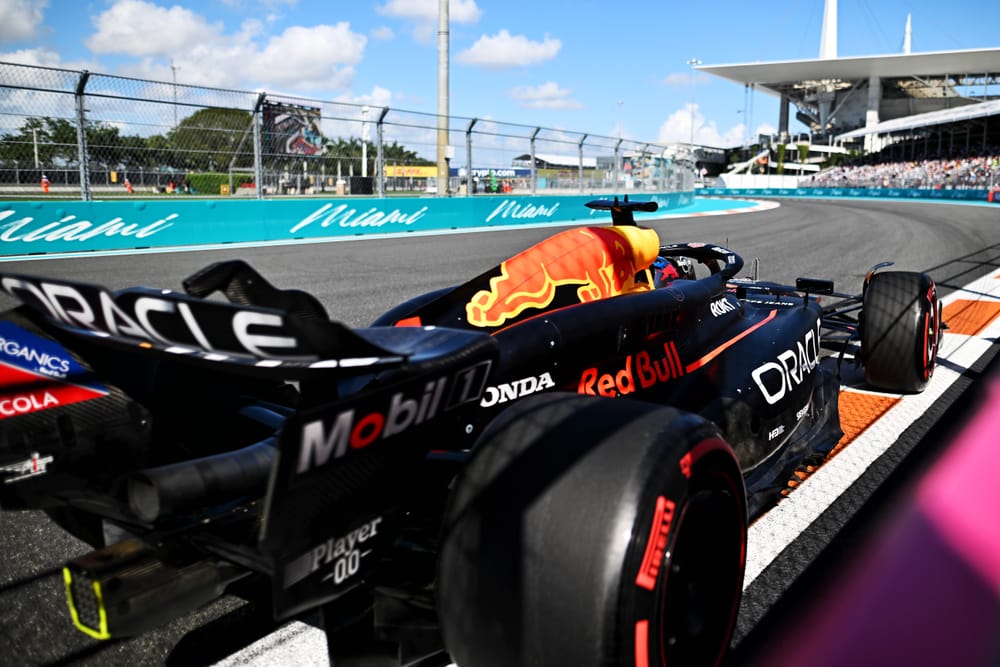Up Next

There is always an underlying competitive order in Formula 1, but sometimes external factors prevent it from fully playing out.
Sometimes those factors are visible and obvious – the timing of the runs relative to the track condition, for example, or a particular technical problem with one or more of the leading contenders – but occasionally it’s only obvious that randomising factors are present, but less obvious what they are.
That’s how it’s been in Miami so far this weekend, but even on such a day it has been inevitably Max Verstappen and Red Bull who have put the disparate pieces together best.
There were moments on Friday where it looked as if Lando Norris’ updated McLaren had the legs of the Red Bull and Ferrari. There were windows as recently as Q2 where the Mercedes looked respectably quick, others where it was no better than a midfield runner. The Aston Martins were suddenly nowhere, Daniel Ricciardo’s RB went from being a shock fourth in sprint qualifying to not making it out of Q1 the next day.
“It’s been extremely difficult to put a lap in where everything just works,” said Verstappen after setting his seventh consecutive grand prix pole.
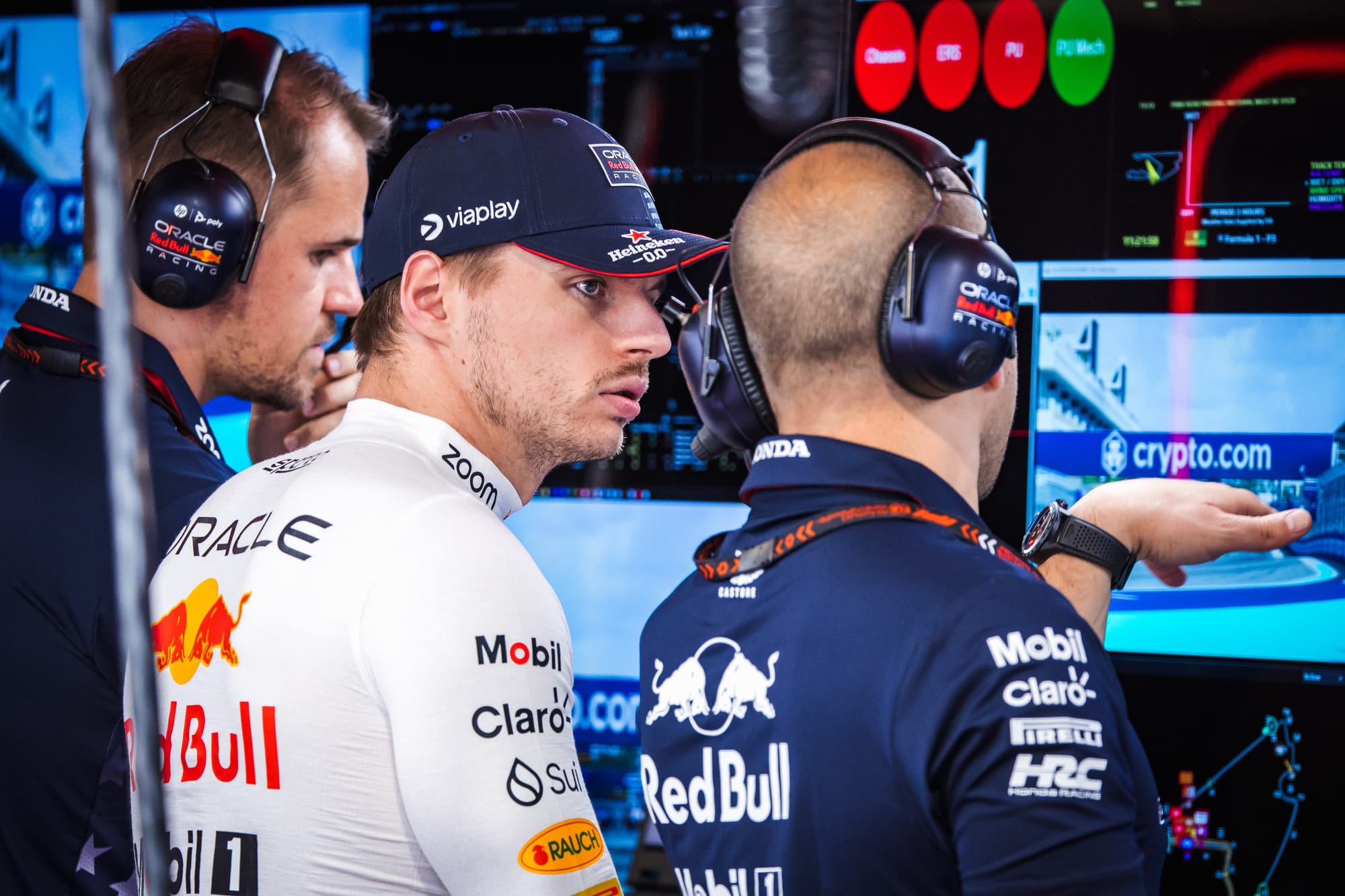
“For some reason it’s just extremely difficult to get the tyres to work around the whole lap. Sometimes you have little moments here and there and it’s not consistent.
“That makes it very difficult to get the perfect lap. Every lap you put on the board you’re kind of guessing.
“Which doesn’t make it so nice to drive… it’s very slippery, the tyres don’t really seem to work that well and when you combine those things it makes it really tricky.”
They were sentiments backed up by second-quickest Charles Leclerc: “It’s extremely tricky to put a lap together. The tyres, especially in the second sector, are very inconsistent. There are quite a few corners where you don’t really know what you are going to get.”
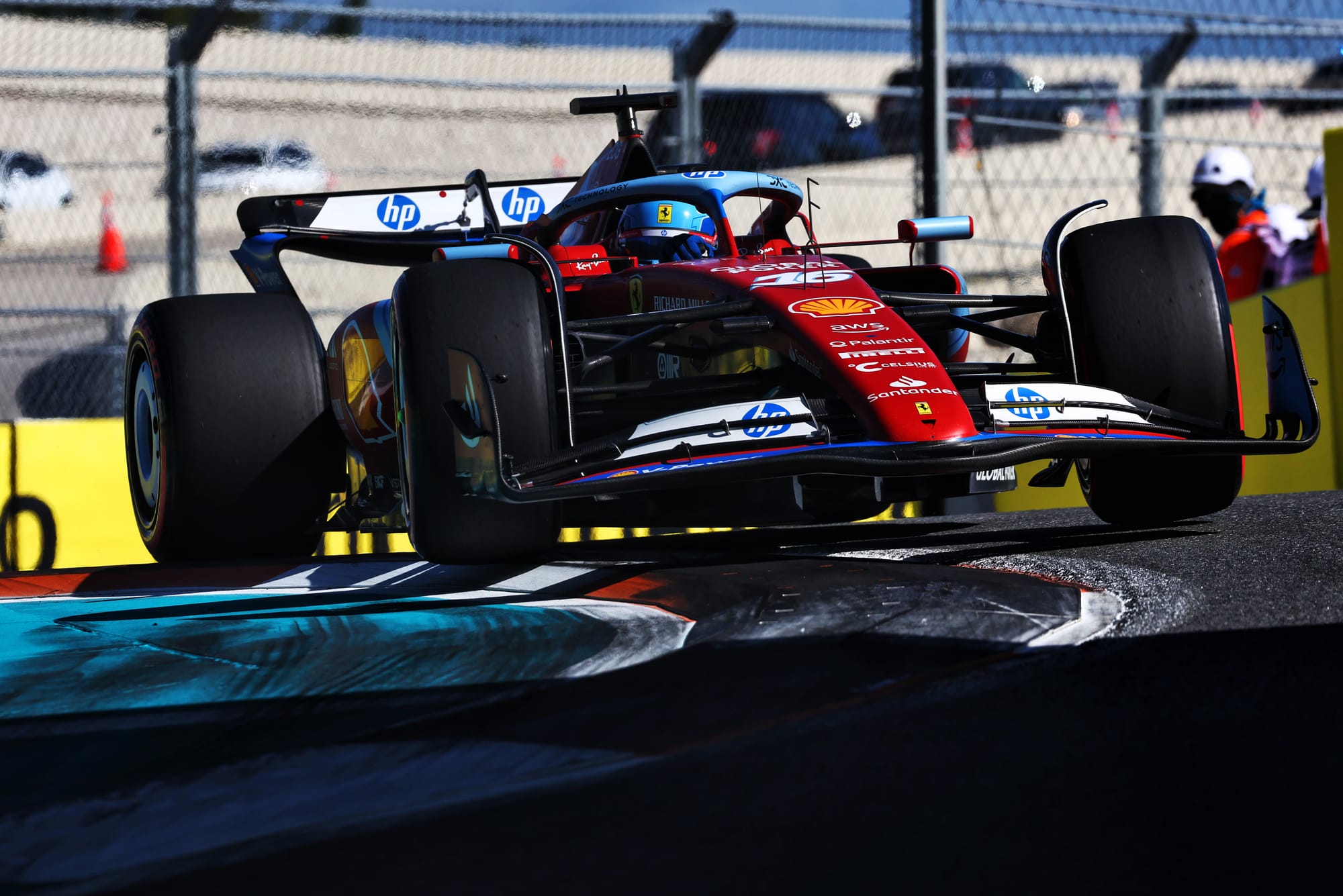
He qualified less than a tenth ahead of Ferrari team-mate Carlos Sainz and the Red Bull of Sergio Perez.
However, it was Lando Norris – fifth-quickest in the updated McLaren, just ahead of team-mate Oscar Piastri in the less developed version – who perhaps had the best handle on the apparent anomalies.
He’d looked dynamite on the mediums in SQ1 and SQ2 on Friday. He tried his single saved new set for his first run of Q3 on Saturday, but it didn’t reproduce such form and he did his time on the final run on a set of softs.
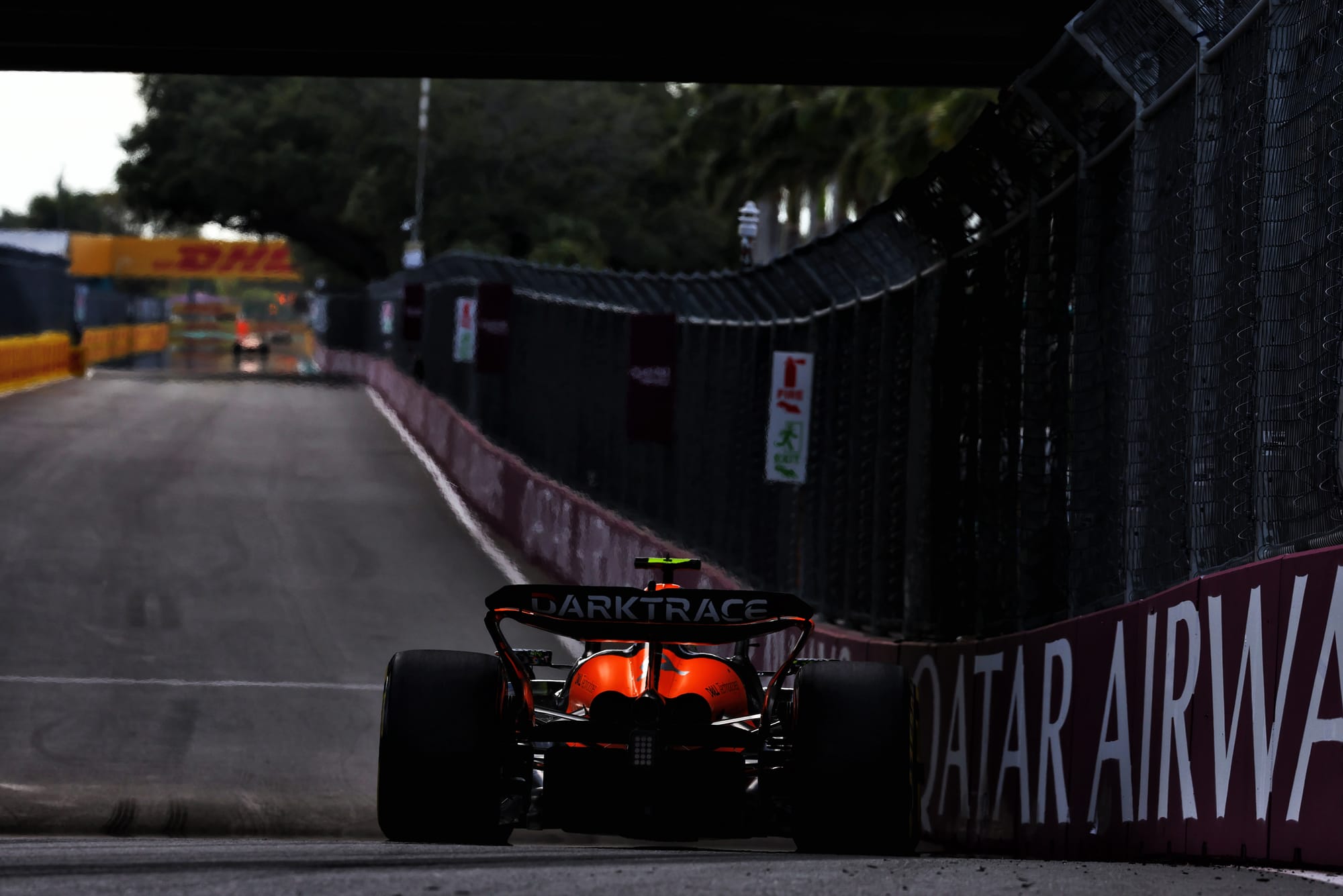
McLaren had stayed constant from Friday whereas Red Bull and Ferrari had made enough progress to leap past it.
Norris agreed with Verstappen and Leclerc that it was very easy to overdo things, but seemed less mystified as to why.
“You push 2km/h more into a corner, even 1km/h more, and it’s the difference between being on the limit and over it and when you go over it you lost a chunk of time,” he said.
“So you do a corner and it feels like you can brake two metres later next time – and then find you can’t.
“I think it’s just because the track is so hot. Maybe the tarmac plays a part as well.
“So you can get it all to click and look mega and it feels under the limit but it’s not. There’s nothing wrong with the tyres, it’s just the heat.”
That seems as good an explanation as any – especially when combined with Pirelli’s assessment of the track surface фы having a micro roughness 30% greater than last year, probably as a result of the super high-pressure water treatment it had received since then. With the gap between the small stones so much greater, there is less chemical bonding between the rubber and the track’s surface.
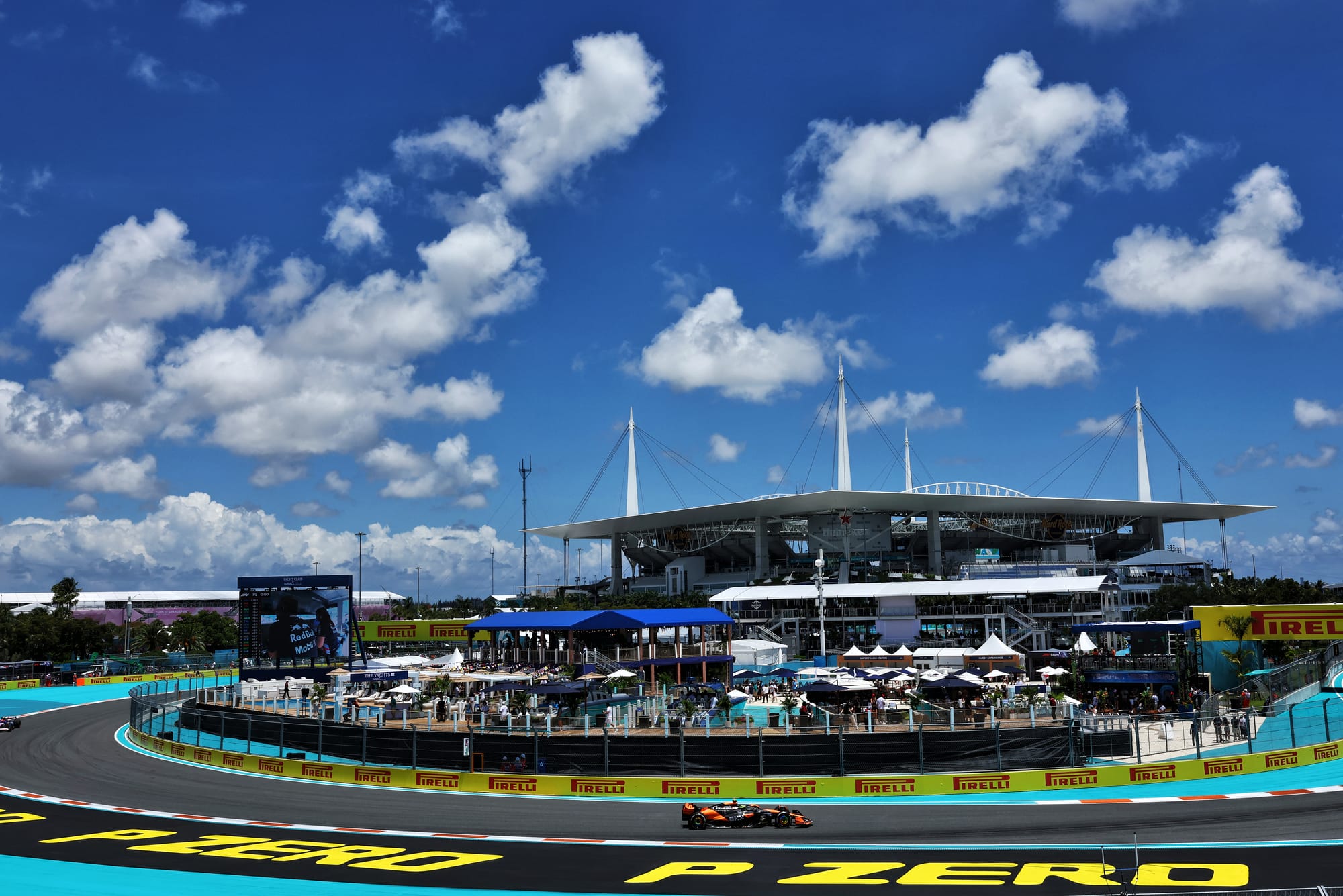
The track’s grip plateaued early in the weekend, stubbornly refusing to offer up greater grip. At such high track temperatures (45°C+), the limit was relatively easily reached. But the usual process of a driver establishing a basic foundation of how hard to push and then progressively pushing further didn’t really work.
So the usual competitive picture eventually emerged, but without the drivers feeling they had nailed it.
“It’s quite frustrating,” said Verstappen, “not fun to drive like that. Some qualifying you go in knowing 'yeah, I can find a tenth here, there, the tyres are quite consistent and you can just push'. Here you have no idea what you’re going to get. That makes it really difficult.”
The other trait the high temperatures brought out was specific to the soft C4 tyre in that it needs very delicate treatment on the out-lap to prevent the surface of the rears wildly overheating. But the grip level and layout of the track doesn’t unduly stress its core.
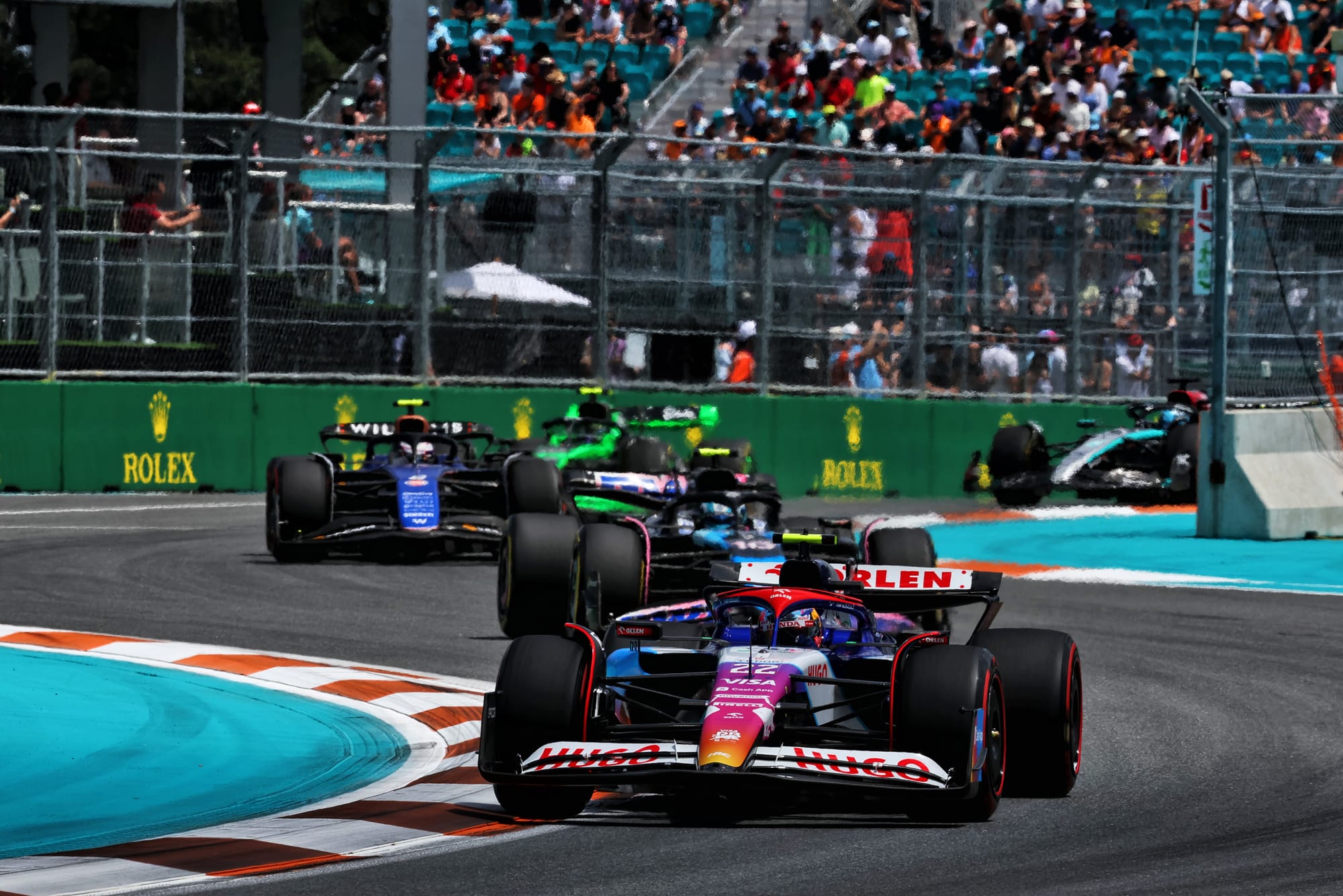
So once it’s at the right temperature, it’s relatively low-deg and both Yuki Tsunoda and Logan Sargeant showed in the sprint race that it was a decent race tyre. The compounds are actually quite conservative for the demands of the track.
The unusual tyre picture and the nature of a sprint weekend format had teams looking less optimised than usual. In reality, that is probably all that we were seeing.
Mercedes – seventh and eighth with George Russell and Lewis Hamilton respectively - struggled to get its car working on the medium tyre on Friday (not making it out of SQ2 in sprint qualifying) but had fixed that for Saturday. Hamilton even set his Q3 time on it. But both he and Russell were slower than Hamilton had gone on the soft in Q2, when he’d been only 0.1s off the pace.
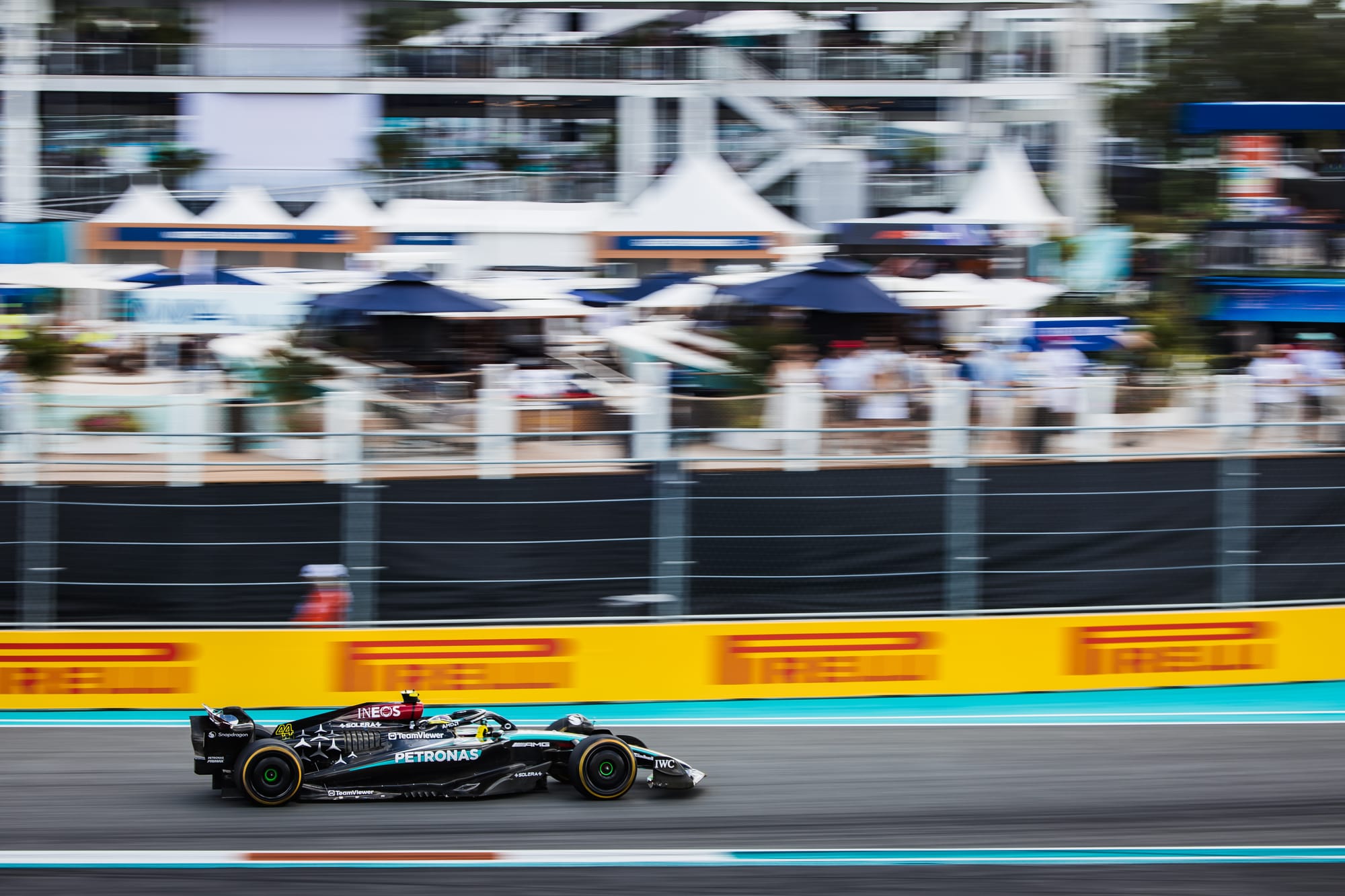
“It was difficult to land the tyres in the right window,” said the team’s Andrew Shovlin. “We didn’t seem to be the only team struggling with that, but when we got it right we were strong.”
The track was all about having a car which gave more consistent access to its potential than the others. That was Verstappen’s Red Bull. Even on a day when it didn’t feel like that to him.
Everything is relative – and here he is again sharing the front row with Leclerc.

